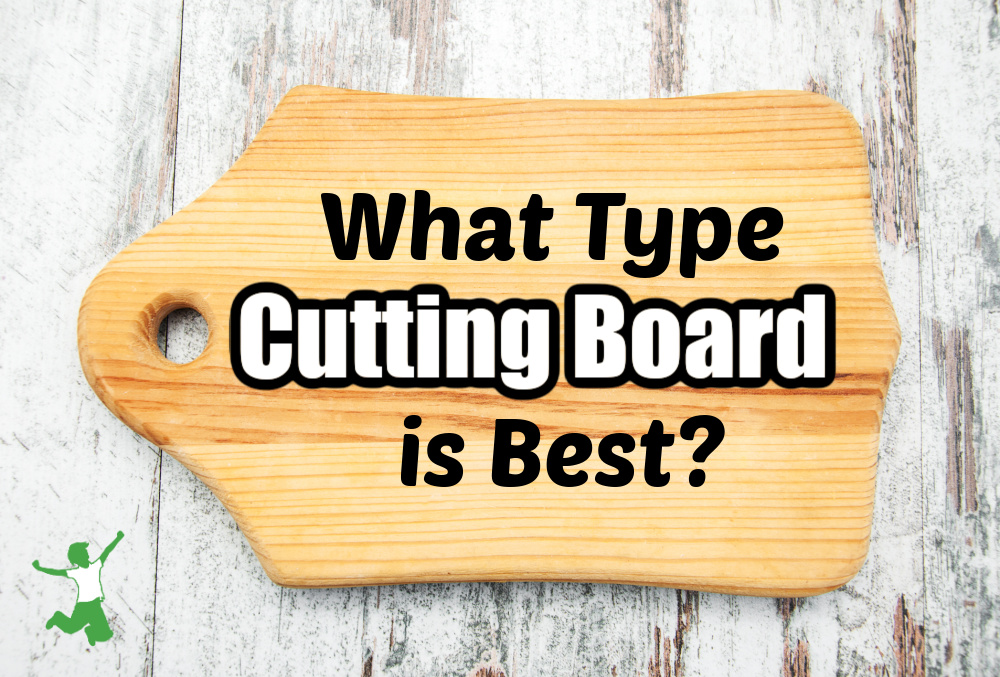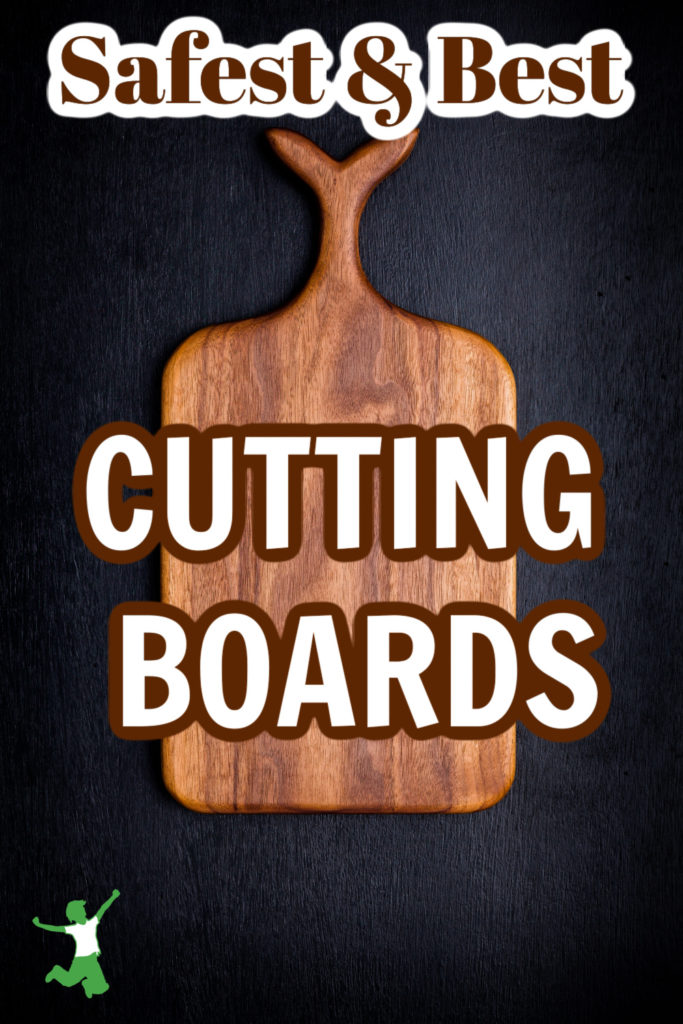Comparison of the various types of cutting boards and whether plastic is truly safer and better than wood as claimed.
Cutting boards of various shapes and sizes are very important tools in any home where meals are freshly prepared.
As for the best cutting boards, however, which material is truly optimal for food prep safety?
Are plastic or wood cutting boards preferable?
The answer might surprise you!
Restaurants Consider Plastic Cutting Boards Safer
Plastic has long been considered superior to wood.
For this reason, people have generally preferred this type of material in the name of food safety.
The prevailing wisdom is that plastic is less hospitable to bacteria, and therefore, would be safer.
Most restaurants use plastic for this reason. It is considered more sanitary by the industry because it is easier to wash and does not absorb food juices. (1)
But…is this really true?
Research Compares Plastic vs Wood
Research simply does not bear this out in practice, however.
As it turns out, wood is much less likely to harbor pathogenic bacteria than plastic!
Wood by far makes for the safest cutting boards to use in your home!
The research conducted by food microbiologists at the College of Agricultural and Life Sciences at the University of Wisconsin-Madison discovered that wood somehow eliminates bacteria but plastic does not. (2)
The manner in which the bacteria perished on the wood but not on the plastic is not known.
The scientists found that 3 minutes after contaminating a wooden cutting board, 99.9% of the pathogenic bacteria had died, while none of the bacteria died on plastic.
In addition, bacteria held at room temperature overnight on a plastic cutting board increased in number.
Surprisingly, the researchers could not find any bacteria present on wood treated in exactly the same manner!
So it seems that the prevailing “wisdom” that plastic is safer than wood is not true after all.
Wooden cutting boards are the best and safest choice after all.
Why is Plastic Unsafe?
I was happy to discover this information as I have always intuitively preferred wood over plastic cutting boards.
For one thing, wood is more stable than plastic during chopping. In my experience, you are far less likely to experience an injury when chopping meat and veggies on wood.
In addition, I have always thought that little bits of plastic or chemicals must be somehow released into the food from the repeated exposure to a sharp knife.
I have not seen evidence of this in the research. It just seemed to be common sense. Hence, I have stayed away from plastic and have always stuck with wood.
In particular, I have steered clear of plastic cutting boards with special antimicrobial surfaces.
Any product that boasts that it is antimicrobial screams “hormone-disrupting chemicals”, so I avoid them like the plague.
Best Type of Wood
For the best cutting boards, it is best to stick with old-fashioned wood block.
Do not use cheaper boards made with bonded wood pieces. The glue holding the board together can be toxic.
In addition, avoid “pre-oiled” wood boards. Oil them yourself at home with unrefined coconut or olive oil.
My choice is unfinished organic bamboo butcher block (like this one) as it is a sustainable, fast-growing natural resource that is manufactured in a safe manner as well.
Are Probiotics the Reason Wood is Best?
As an aside, I have a theory about why pathogenic bacteria are unable to survive on wood boards but instead grow exponentially on plastic.
Lactobacilli is a beneficial bacteria on the surface of all natural things. This includes our own skin. This beneficial microbe kills off pathogens that are within its vicinity.
This is why grassfed raw milk is safer than pasteurized. The naturally occurring probiotics “crowd out” any pathogens that might get into it.
Heat-treated foods just get contaminated if the same thing were to happen.
Perhaps this is the same method for how pathogens on wood cutting boards are destroyed within 3 minutes, yet this same thing does not happen on plastic?
(1) Why Don’t Restaurants Use Wooden Cutting Boards
(2) Wood Cutting Boards, Not Plastic, Are Safer for Food Prep










At a craft show I bought cutting boards made out of Corian……..like the counter tops. I don’t know what Corian is made out of but I would think chemicals would be involved. I used them for awhile but also bought some made of bamboo. When we had a garage sale and moved I randomly decided to get rid of the Corian ones. I think they are harder on my knives and I just like the feel of cutting on bamboo instead of such a hard surface. Now I also wonder how healthy the Corian ones were……….probably not. Glad they are gone. Since then I have read that bamboo is naturally anti-fungal. That even when growing it pesticides are not necessary because bugs don’t like it. It seems like it is more durable than wood to me. My bamboo boards are holding up and lasting longer than when I had some wooden ones in the past. So I am sold on the bamboo for many reasons.
Is Plastic Really Better than Wood for Cutting Boards? – The Healthy Home Economist http://t.co/lQxZpF0
One of my cutting boards is the Epicurean brand Kitchen Series, nice because it’s 1/4″ thin and lightweight. I’ve often wondered how these compare to wood. They’re a pressed wood fiber pressed with food safe resin. The company website says they’re sustainably harvested, bacteria resistant, eco-friendly, 100% USA-made, won’t dull your knives, and can be washed by hand or in the dishwasher, no oil necessary. I wonder what’s in that “food safe resin” and what its health effects might be, if any. Any thoughts or findings on this?
Please post when you find out! I was asking this same question of the culinary store staff!
Many of the bamboo cutting boards are advertised as green and sustainable. They use food grade, nontoxic glues and no dyes or artificial stains.
I’m not 100% certain, but I don’t think they would have the anti-microbial properties that actual wood has. We are putting in butcher block countertops, so I was reading a lot about this same topic. There was some amount of argument, but many people were able to back up with research that staining, sealing, or otherwise finishing the countertop would prevent the bacteria from absorbing into the wood where they are killed by some enzyme. I would think the glue would do the same thing for the wood fibers in those boards.
I continue to ponder this. The Epicurean website says their boards are bacteria resistant. I wonder if they have been tested for this and for any health effects from the resin (I’m not sold that just because something is called “food safe” that it actually is, as in so many plastics used in food packaging these days). Would be nice if some reliable, unbiased studies were posted on their website or elsewhere.
Is Plastic Really Better than Wood for Cutting Boards? – The Healthy Home Economist http://t.co/pLSqyJz
This makes so much sense considering that plastic storage containers really like to hold on to the smell of the food. After hand washing, even the lids on my glass pyrex containers will hold onto the smell of whatever food was in the container. The dishwasher seems to be the only way to get the smell out, but of course that has it’s own problems (way too hot for plastics but I’m okay with it for a lid that won’t touch the food). Seems like cutting boards would be the same. Too bad all of my cutting boards are plastic, but maybe someday they’ll get replaced.
I have always suspected this . . . http://t.co/wDOOMTx
Does anyone know anything about the wooden boards used in the plastic vv wood experiment? What kind of wood, and how new? I’m just thinking that if they used freshly cut pine, for instance, the essential oils in the wood would be powerfully anti-bacterial. The same wouldn’t be true of an older board, or of bamboo.
You can always add oils to older wood boards after washing them.
I was debating getting new cutting boards because mine are all plastic, but all the ones I can find in the stores have “issues” that I wonder about. The wooden ones are pieced together like a pretty quilt so I wonder what kind of glue they used to glue all the pieces together. The bamboo ones seem to have some kind of finish on them, like a varnish or a polyurethane coating on them. Won’t that end up in the food in little pieces when I am cutting stuff up? I really don’t want to feed my family glue or varnish any more than I want to feed them plastic. Suggestions?
I know this is a really weird reason why I have always hated plastic cutting boards, but I hate the sound that they make when the knife hits the plastic. So annoying and not at all natural. The sound of the knife hitting the wood is so much more pleasant and relaxing as you go about your work in the kitchen – at least to me.
Love my wood boards. My husband makes them and they last forever!